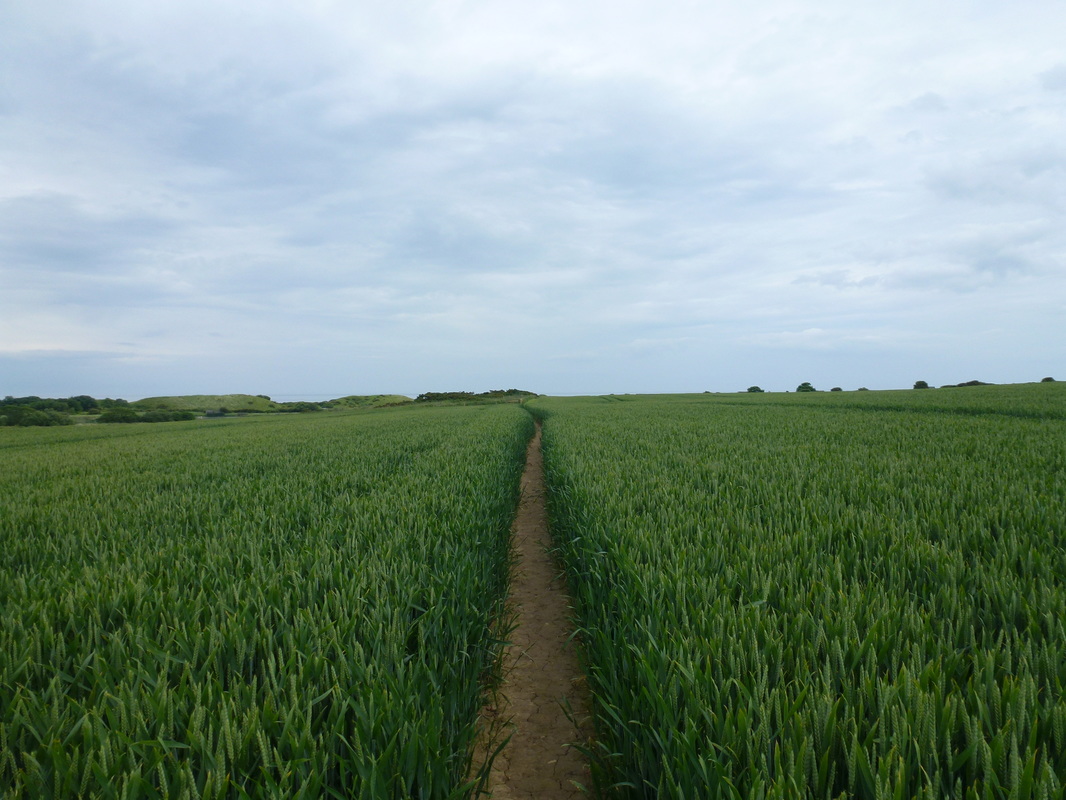Craster & Dunstanburgh Castle - Thursday 12 June 2014
Route
Low Newton-by-the-Sea - Embleton - Dunstan - Craster - Dunstanburgh Castle - Embleton Bay - Low Newton-by-the-Sea
Parking
Verge Parking just above Low Newton-by-the-Sea (Free) - Grid Ref NU 2390 2492 (nearest postcode is NE66 3EN). There is also a large Pay & Display Car Park a few yards down the road on the right as you walk into Low Newton.
Mileage
9.7 miles.
Terrain
Field paths & quiet lanes with some beach walking crossing Embleton Bay
Weather
Sunny spells & light breezes
Time Taken
4hrs
Total Ascent
1036ft (316m)
Map
OS Explorer 332 - Alnwick & Amble
Walkers
Dave, Angie & Fudge
Low Newton-by-the-Sea - Embleton - Dunstan - Craster - Dunstanburgh Castle - Embleton Bay - Low Newton-by-the-Sea
Parking
Verge Parking just above Low Newton-by-the-Sea (Free) - Grid Ref NU 2390 2492 (nearest postcode is NE66 3EN). There is also a large Pay & Display Car Park a few yards down the road on the right as you walk into Low Newton.
Mileage
9.7 miles.
Terrain
Field paths & quiet lanes with some beach walking crossing Embleton Bay
Weather
Sunny spells & light breezes
Time Taken
4hrs
Total Ascent
1036ft (316m)
Map
OS Explorer 332 - Alnwick & Amble
Walkers
Dave, Angie & Fudge
|
GPX File
|
| ||
If the above GPX file fails to download or presents itself as an XML file once downloaded then please feel free to contact me and I will send you the GPX file via e-mail.
Walk Description
A lovely grassy start to the walk as we head out to Embleton
The grassy swathe gave way to a path through the crops - from previous experience when these sort of paths get a tad wet they become pretty slippy.
Looking east to Dunstanburgh Castle - we would be over there later on this afternoon
Arriving in the lovely village of Embleton - as can be seen, Fudge has his game face on
The stone gateway to Craster Tower which was more than likely added to the existing buildings in the late 18th century
The road sign indicating we had arrived in Craster
The sign is made up of a net, crab & a fish and depicts the villages heritage as a fishing port although there are not many boats in the harbour these days.
The sign is made up of a net, crab & a fish and depicts the villages heritage as a fishing port although there are not many boats in the harbour these days.
Craster Harbour
Leaving Craster we were now on the Northumberland Coast Path and heading north towards Dunstanburgh Castle
From Craster to Dunstanburgh Castle is a delightful walk on a carpet of grass
Large grassy swathes are his favourite type of terrain
Approaching Dunstanburgh Castle
The castle was built at a time when relations between King Edward II and his most powerful baron, Earl Thomas of Lancaster, had become openly hostile. Lancaster began the fortress in 1313, and the latest archaeological research indicates that he built it on a far grander scale than was originally recognised, perhaps more as a symbol of his opposition to the King than as a military stronghold. Unfortunately the earl failed to reach Dunstanburgh when his rebellion was defeated, and was taken and executed in 1322. Thereafter the castle passed eventually to John of Gaunt, who strengthened it against the Scots by converting the great twin towered gatehouse into a keep. The focus of fierce fighting during the Wars of the Roses, it was twice besieged and captured by Yorkist forces, but subsequently fell into decay.
The castle was built at a time when relations between King Edward II and his most powerful baron, Earl Thomas of Lancaster, had become openly hostile. Lancaster began the fortress in 1313, and the latest archaeological research indicates that he built it on a far grander scale than was originally recognised, perhaps more as a symbol of his opposition to the King than as a military stronghold. Unfortunately the earl failed to reach Dunstanburgh when his rebellion was defeated, and was taken and executed in 1322. Thereafter the castle passed eventually to John of Gaunt, who strengthened it against the Scots by converting the great twin towered gatehouse into a keep. The focus of fierce fighting during the Wars of the Roses, it was twice besieged and captured by Yorkist forces, but subsequently fell into decay.
The Lilburn Tower at Dunstanburgh Castle
A delightful section of walking as we cross Embleton Bay
Looking back to the castle from Embleton Bay














